Orpheus and Dionysus: The Mystery Cults of Ancient Greece
While Hesiod’ Theogony remains the standard, orthodox version of Theogony, the origin and genealogy of the gods, from Greek antiquity, there exists an alternate tradition attributed to pseudo-historical and somewhat mythical figure of Orpheus, a character whose life is shrouded in mystery and tales of great heroic journeys. According to some legends and tales surrounding his life he is the son of the Muse Calliope and the god Apollo, the patron deity of the city of Delphi where the famed temple of the Oracle at Delphi was kept. Orpheus was a famed lyric poet who supposedly gained his lyre from a chance meeting with Apollo in the forest one day in his youth, Apollo having been greatly charmed by the boy’s voice. It was there supposedly that Apollo initiated him into the great “mysteries” to which many of the practices and rites of the esoteric “mystery cults” of ancient Greece were associated.
But perhaps Orpheus is best known for his lyrical voice and the poetry which bears his name, i.e. the Rhapsodies, a voice and music was known to tame even the most savage of beasts. He is perhaps best known not only for his role in the tale of the Golden Fleece as the poet who tames the Sirens on their epic journey, but also his great love for the nymph Eurydice for whom he travels to the realm of the dead to save, only to have her lost forever when he turns his head to look back to her to make sure she is following him.[1]
With respect to the life of Orpheus, what we know comes to us down as legend and tales of old that speak of a child who is singing in the forests one day in Thrace who is found by Apollo who is charmed by his sweet voice. As the legend goes, Orpheus was taught music (the lyre) by Apollo himself and was ultimately initiated into the “cult of the mysteries”, or divine knowledge, by him. After a life of singing and divine inspiration, he fell in love and married the nymph Eurydice, who was his ceaseless companion and close confidante. She, after being pursued through the woods by the god Aristaios, a deity also associated with Dionysus and Zeus, was killed by a poisonous snake and killed. Orpheus was grief stricken, and with the assistance of the gods who empathized with his plight, travelled to the underworld to try and save his beloved. He journeyed through the land of the dead and reached the throne of Pluto (Hades) and Persephone and begged them to let Eurydice live again. Again his true love and plight was empathized with and they granted his wish, but under one condition. He was not to look back at his beloved until they had completely left the realm of the dead, a test of faith as it were. Orpheus, in one of the great tragedies of Greek mythology, looks back to be sure his beloved is behind him before leaving the land of the dead and so she is lost to him forever. Orpheus is then said to have wandered the woods by himself and only sang to men after that, singing always about his lost love for Eurydice. There are different tales of his death but one story has him slain by Thracian women, (Mainádæs), women associated with the cult of Dionysus again, for luring their men away with his sweet music. Orpheus is also associated with the myth of Jason and the Argonauts (the Golden Fleece) and is said to have saved the crew from the deadly Sirens on their journey with the charm of his music.
The religious practices and rites surrounding Orphism are closely associated with the life and legend of the mythical figure Dionysus, or Dionysus Bacchius or Zagreus as he was sometimes referred to. Dionysus in mythical lore was the son of Zeus and Persephone, or sometimes Demeter or Semele depending upon the mythical variant. As the legend goes he was murdered as a small child at the behest of Zeus’s jealous wife Hera. His heart however was saved by Athena before he could be killed forever, and through this act of kindness and empathy he is born again. This notion of rebirth and salvation was a main theme surrounding the worship of Dionysus and most certainly echoes themes we find much later in the life and teaching of Jesus.
The god, or cult, of Dionysus in ancient Greece – and through Roman times as well where he was worshipped as Bacchus – is closely associated with death and rebirth and divine ecstasy, which in turn was closely associated with wine, which in turn was associated with fertility and the spring, again rebirth. Hence his, and less directly Orpheus’s, association with not only Persephone, the goddess of the underworld (death and rebirth), but also the goddess of the harvest and the spring, Demeter. The close affiliation to the “divine mysteries”, to which the worship of Dionysius is closely associated with in antiquity, and to which Orphism in turn is also closely associated with, is evidenced by the many parallels and intertwined myths surrounding the two figures – Orpheus’s trip to the underworld and back to save his love Eurydice and Dionysus journey to the underworld to save his mother Semele for example.
What we know of the life of Orpheus as a historical figure, if in fact he did exist as an actual historical figure, is not much. However, he is closely associated with the region of Thrace, both from stories around his birth and death, a region which lies just to the North of classical Greece and the Near East, lying in modern day Bulgaria which would explain why the stories and poems of his life were not integrated into classical Greece mythology until after Homer and Hesiod. In many respects one can look at the historical figure of Orpheus just as one looks at the historicity of the Hebrew Moses. In fact, the two traditions surrounding these two “prophets”, if we may call them that, come from basically the same period in ancient history albeit from two different, but closely related, regions. Moses from ancient Palestine/Middle East and Orpheus from Thrace/Greece/Near East.
Little is known about the life of this pseudo-mythical figure other than it believed by modern and ancient scholars alike that he was in fact an historical figure, the notable exception being Aristotle, who – depending upon how you interpret the quotations from later authors from whom Aristotle’s opinion is summarized – doubted not only his existence but also his authorship of the poems, the Rhapsodies, that bear his name. Aristotle however, given his reputation as a scholar and the access he must have had to historical records and accounts from Greek antiquity is worth mentioning as a skeptic but having said that he was skeptical of the old mythical tradition from antiquity in general so perhaps it is not surprising.
According to later authors who are by all accounts are likely quoting from the same passages in Aristotle’s lost work De Philosophia, it seems likely that Aristotle believed at least that the compilation of hymns that bear the name of Orpheus was done by an Onomakritos, a scribe and counselor from the court of Pesistratos from the late 6th and early 5th centuries BCE who ruled Athens from 561 to 527 BCE. As the story is related by Herodotus (who does not mention Orpheus specifically but indirectly as it related to the poems of the Muses) he tells us, consistent with Aristotle in fact (or perhaps Aristotle’s reference is from Herodotus) that these poems of the Muses (Musaios) were actually the works of Onomakritos, who inserted his own “forgeries” into the poems themselves and was therefore banished from Athens by the son of Pesistratos, Hipparchos. After the family of Pesistratos was banished to Persia, Herodotus tells us that is by using the works Onomakritos that the great Persian king Xerxes I was convinced to lead an invasion into Greece.[2]
The earliest literary reference to Orpheus in the historical record is a two-word fragment of the sixth-century BC lyric poet Ibycus who simply refers to Orpheus as “the famous Orpheus”. We also however find references and attestations to not only Orpheus himself but also the traditions surrounding the cult of mysteries or aspects of worship and initiation which were such an integral part of the tradition surrounding Orpheus from Herodotus as well as the tragic Greek playwright Euripides (The Bacchae), as well as Plato among others. Plato in particular in one quotation from the Apology places Orpheus in the same category as Hesiod and Homer, as well as the Muses themselves, as having knowledge of divine mysteries as well as being objects of reverence.[3] Having said that, with respect to what can be known about the historical figure of Orpheus if he did indeed exist, it is perhaps worth quoting a modern day scholar (and arguably a modern day “devotee”) on the subject, whose words sum up the situation quote nicely:
This alone may be depended on, from general assent, that there formerly lived a person named Orpheus, whose father was Œagrus, who lived in Thrace, and who was the son of a king, who was the founder of theology, among the Greeks; the institutor of their life and morals; the first of prophets, and the prince of poets; himself the offspring of a Muse; who taught the Greeks their sacred rites and mysteries, and from whose wisdom, as from a perpetual and abundant fountain, the divine muse of Homer, and the philosophy of Pythagoras, and Plato, flowed; and, lastly, who by the melody of his lyre, drew rocks, woods, and wild beasts, stopped the rivers in their course, and ever, moved the inexorable king of hell; as every page, and all the writings of antiquity sufficiently evince. Since thus much then may be collected from universal testimony, let us, pursue the matter a little farther, by investigating more accurately the history of the original Orpheus; with that of the great men who have, at different periods, flourished under this venerable name.[4]
Leaving aside the obvious questionable attribution of the inspiration and source of the works of Homer, Pythagoras and Plato being from Orpheus himself, this quite eloquent view of the figure of Orpheus does represent the view of the “inner circle” of Orphic believers in antiquity however, reflecting not only the great influence that his life and works were believed to have had, but also the “secret” nature of the “mystery cults” and rites that were so closely associated to the figure himself. What we do however know for certain is that there existed a theology and “mystery cult” tradition surrounding the pseudo-mythical figure of Orpheus that was very influential on the development of not just theogony but also in turn philosophy in classical Greece.
Our primary textual evidence is from not only from the hymns which bear his name which survive for the most part intact, having in all likelihood been compiled in the last few centuries BCE, but also from references to the practices and rites surrounding Orphism in Herodotus as well as Plato and Aristotle (despite the latter’s noted skepticism regarding Orpheus as an historical figure) and prominently in the more recently discovered by the Derveni Papyrus. All of these point to a tradition that was not only widely known and practiced in classical Greece, but also one that was on par, albeit independent, from the Homeric and Hesiodic poetic/historical traditions which represented more “orthodox” Hellenic theological and mythological beliefs. Notably however, Orpheus is not mentioned in either the works of Homer or Hesiod, speaking to an independent theological tradition, at least in the first few centuries of the first millennium BCE after which it was clearly integrated and synthesized into Hellenic mythological and cultural lore.
The Derveni papyrus was discovered in 1962 and is believed to have been compiled in the 5th century BCE. While it’s a fairly damaged papyrus scroll, the bulk of the text has been recovered after much painstaking research and it consists of a running commentary on Orphic theogony, giving us insight and corroborating evidence of Orphic theogony proper, but also of a fairly early tradition of theo-philosophical interpretations of theogony in general, this one most likely coming from a school associated with Anaxagoras given the prominent role of “Mind” throughput the text. The papyrus was discovered in a burial site from the 3rd century BCE around the time of the reign of Phillip II of Macedon around the area of Thrace/Macedon, a region closely associated with the stories surrounding the life of Orpheus. This archaeological find allows us to date Orphic Theogony and cosmological narratives – and in turn practices associated with the tradition undoubtedly – to at least the time of classical Greece. This material and belief systems reflected in the papyrus however, are undoubtedly representative of a theological and mystical tradition that is of much deeper antiquity, a tradition which bears many similarities and resemblances to what we know of ritual and theological traditions of Egypt, as well as those spoken of in the earliest Vedas and the Avestan lore, and one which was clearly of interest to the early Greek philosophers.[5]
Orpheus was believed to be the founder and prophet of the “Orphic mysteries”, as well as credited with the authorship of the so called “Orphic hymns”, a somewhat late Hellenistic compilation of poems addressed to the various gods and goddesses that were pre-eminent in the Orphic Theogony, a somewhat alternative representation of the divine order of the universe than presented by Hesiod. The Orphic hymns include poems and commemorations to the gods and goddesses of Night, Heaven, Fire, and unique to the Orphic mythological tradition to the protogenital human, or Protogonus (Phanes). Within this poetic compilation we also find verses dedicated to major “naturalistic” concepts that played an important role in early Hellenic philosophy such as Law, Justice, Equity, Health, etc. no doubt speaking to the interplay and interchangeability of the gods and goddesses in Greek mythology and the principals or “ideas” which they represented.[6]
Regardless of whether or not he existed as an actual person in history however, the life of Orpheus is not only very closely embedded in and related to classical Greek mythology, but also very closely associated with the so called “mystery cults” of ancient Greece. These cults were closely affiliated with the with rites of initiation and rituals and the worship of Dionysus, worshipped as the “savior” of mankind through which the mysteries of divine union could be realized. While these practices were shrouded in mystery and closely guarded within the “Orphic” community as it were, the Derveni Papyrus in particular reveals some insights into how these mythological narratives were interpreted by those within the tradition itself, a tradition which the author of the Derveni Papyrus was clearly intimately familiar.
Given Orpheus’s close connection with mystery cults and divine ecstasy which was closely aligned to the cults of Dionysus (not just in classical Greece but also in Roman times under the name of Bacchus) by studying Orphic theogony we can get a glimpse perhaps into a more archaic and alternative theological and shamanic tradition than the more structured and literary version presented by Hesiod. For the Orphic theogony by definition carries not just a much more esoteric and “secret” meaning, but one which perhaps points to much more ancient origins given its close affiliation with ancient rites and rituals and initiation, very much reminiscent to the practices and rituals that are laid out in more detail in the Avestas and Vedas assuredly.
[1] Parallels to the story of Orpheus looking back upon his love as they leave the land of Hades can be drawn to the story of Sodom and Gomorrah where the city of Sodom is destroyed by the Lord for its wickedness but Lot’s wife looked back at the destruction of the city and was reduced to a pillar of salt. Genesis 19.
[2] See Pausanias. Pausanias Description of Greece with an English Translation by W.H.S. Jones, Litt.D., and H.A. Ormerod, M.A., in 4 Volumes. Cambridge, MA, Harvard University Press; London, William Heinemann Ltd. 1918. Paus. 1.22.7 and Herodotus Histories Book VII Chapter 6 from Herodotus, with an English translation by A. D. Godley. Cambridge. Harvard University Press. 1920 at http://www.perseus.tufts.edu/hopper/text?doc=Perseus%3Atext%3A1999.01.0160%3Abook%3D1%3Achapter%3D22%3Asection%3D7 and http://www.perseus.tufts.edu/hopper/text?doc=Perseus:text:1999.01.0126:book=7:chapter=6&highlight=onomacritus respectively for references to the account of Onomakritos in the court of Pesistratos and See Orpheus and Greek Religion by W. K. C. Guthrie, Princeton University Press 1993, pages 13-14 for the story of Onomakritos in Herodotus and pgs. 57-59 for his analysis and conclusions regarding the beliefs of Aristotle regarding Orpheus as interpreted from the excerpts of the (much later) Greco-Roman authors.
[3] While Aristotle reflects a more skeptic view of the Orphic tradition as well as the historicity of its founder, Orpheus, we find from Plato’s Apology the following quotation speaking to the high regard at least Plato had for the pseudo-mythical figure. “Or again, what would any of you give to meet with Orpheus and Musaeus and Hesiod and Homer?” Plato. Plato in Twelve Volumes, Vol. 1 translated by Harold North Fowler; Introduction by W.R.M. Lamb. Cambridge, MA, Harvard University Press; London, William Heinemann Ltd. 1966. Apology, verse 41a from http://www.perseus.tufts.edu/hopper/text?doc=Perseus%3Atext%3A1999.01.0170%3Atext%3DApol.%3Asection%3D41a
[4] The Hymns of Orpheus, translation and Introduction by Thomas Taylor, 1792. http://www.sacred-texts.com/cla/hoo/
[5] The analysis of the text is fascinating and revealing into not only Orphic beliefs from the period of classical Greece but also an early commentary on “mystery cult” mythological and esoteric beliefs in and of themselves. See The Derveni Papyrus: Cosmology, Theology and Interpretation by Gabor Betegh. Cambridge University Press 2004 for a very detailed overview of the archeological find, a translation of the scroll (what can be recovered), a good summary of the analysis of the conclusions that can be drawn from the text itself as well as a reconstructed (Orphic) theogony which is embedded in the scroll. Why it was buried with what appears to be a great and well respected warrior and aristocrat remains a mystery.
[6] For a complete translation of the ancient text/fragments, see Hymns of Orpheus, translated by Thomas Taylor, 1792. http://www.sacred-texts.com/cla/hoo/


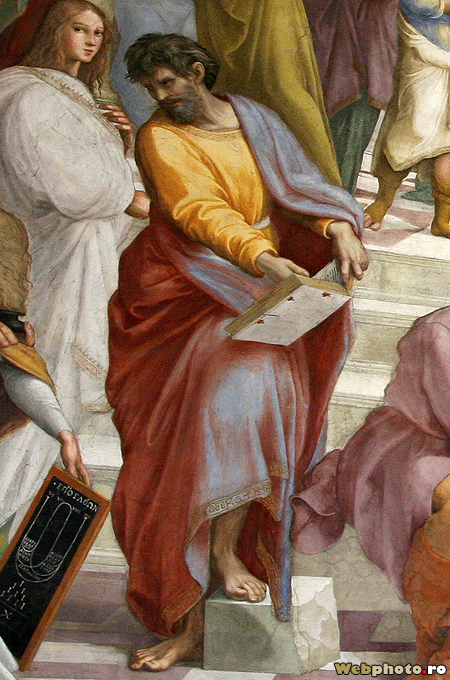
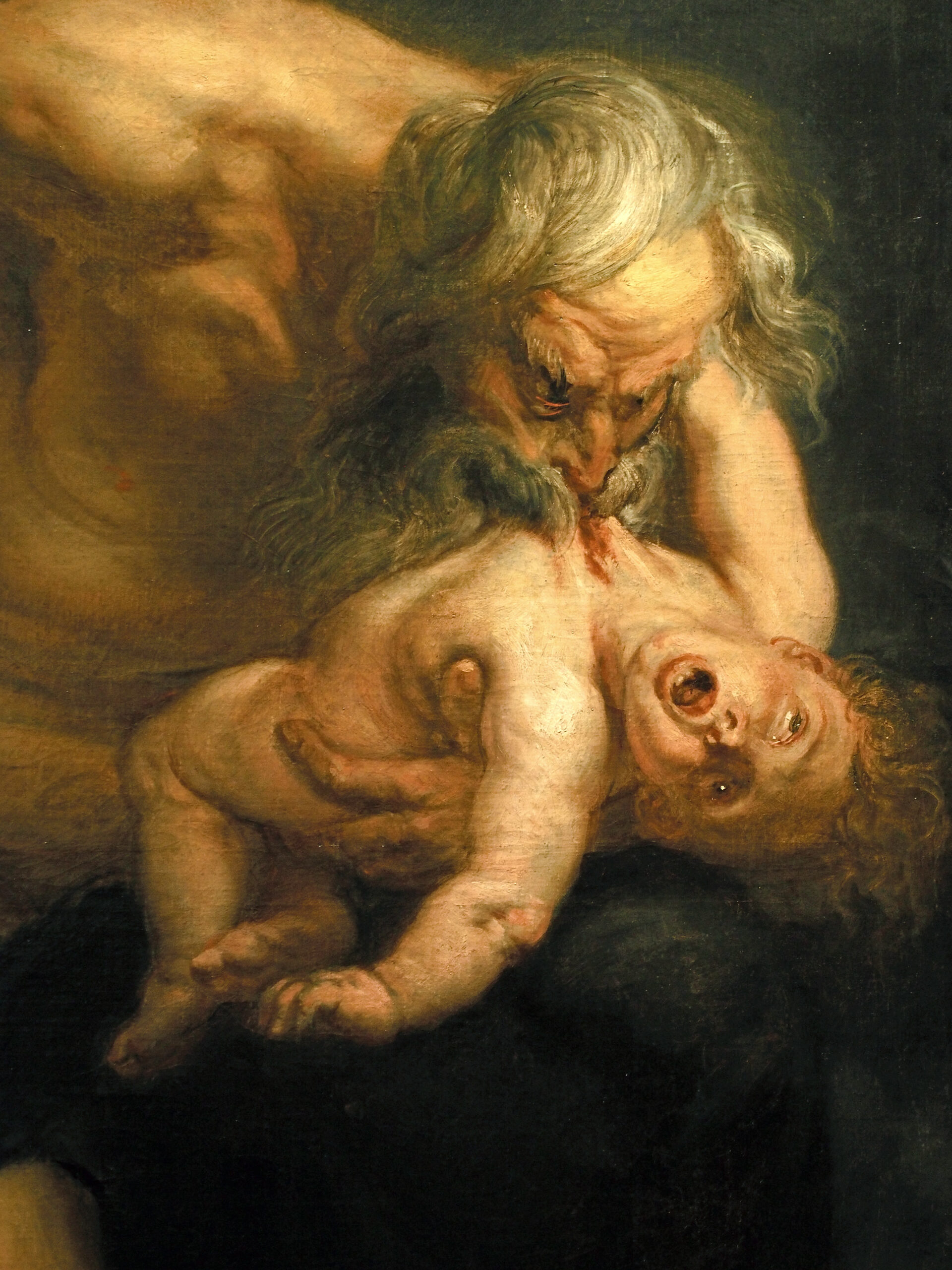
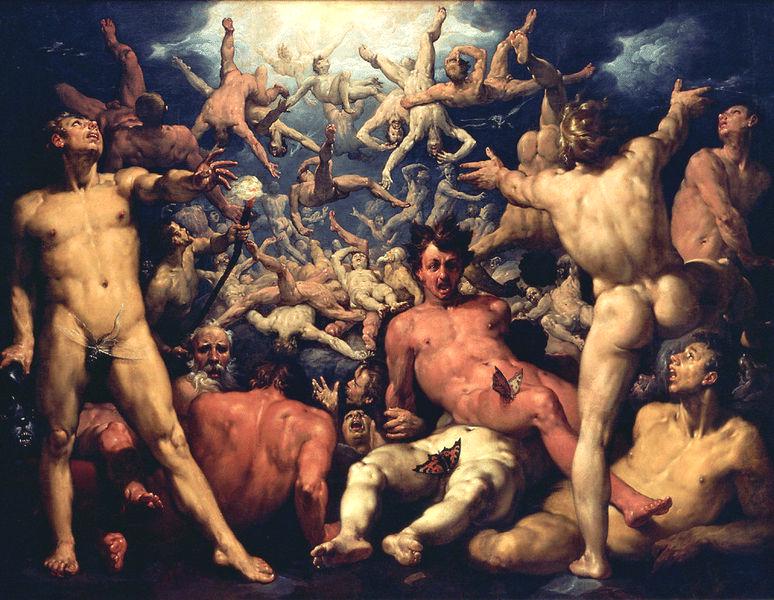

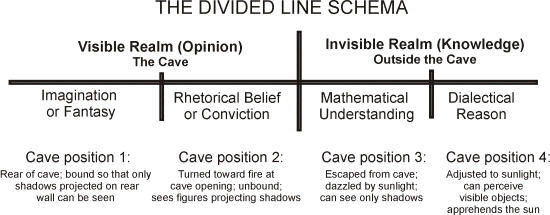

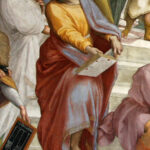
Leave a Reply
Want to join the discussion?Feel free to contribute!